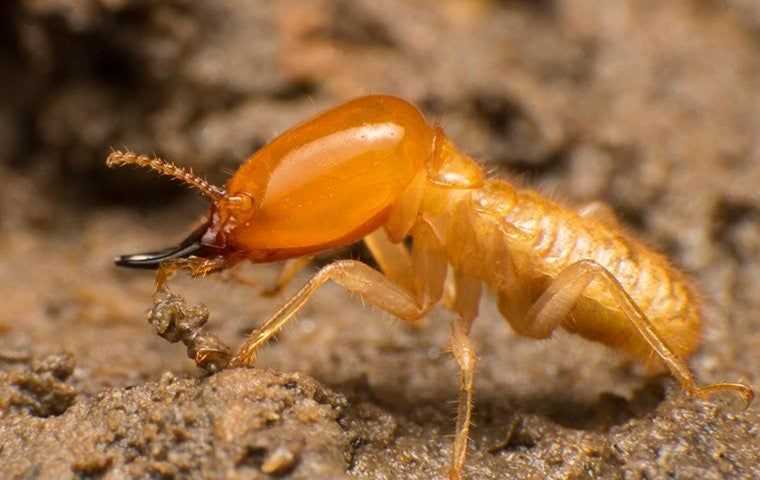Sarasota is home to every kind of termite. We have drywood, dampwood, and subterranean termites. We even have the dreaded Formosan subterranean termite. The variety of termites and the range of control products available can make termite control complicated. We hope to help simplify things today. Join us as we examine essential facts about termite infestations in Sarasota and termite control. We'll tell you how to identify termites and early warning signs, why termites destroy homes, and a few natural termite prevention tips that work to keep termites out. Then, we'll talk about professional termite pest control in Sarasota. You're sure to find some great tips and information here!
How To Identify A Termite Infestation In Your Home

The early warning signs of termites in your home are often subtle, and they vary depending on the termite species infesting your property. While we have three kinds of termites, there are only two ways to detect termites. Aerial detection is used to catch drywood termite activity. These termites don't need contact with the ground and can infest your home right under your nose. Ground detection is used for subterranean termites. Dampwood termites fall in the middle. If you know how to catch drywood and subterranean termites, you'll have what you need to catch dampwood termites.
Aerial Detection: Drywood termite swarmers crawl on your exterior and find tiny gaps to enter your home. Once inside, they create nests in structural voids. These nests are hard to detect at first.
- Inspect hardwood and look for tiny kick-out holes: Drywood termites create these to push frass out of their tunnels.
- Check for frass: The material drywood termites create is mostly droppings, though it looks a bit like wood pellets. The reason it looks this way is that the droppings of drywood termites are the same color as the wood the termites are eating.
- Termite holes: Drywood termites may create damage you are able to see. If you see a hole, shine a flashlight into it. You'll likely find tiny insects moving around in there. If you're lucky, you'll see a soldier termite, which is distinct in appearance and will let you know that you definitely have a termite problem. Soldiers have big orange heads and black pincers.
The longer drywood termites live in your home, the greater the chance you'll notice them. These termites will produce swarmers after a few years, and it is hard to miss a termite swarm in your house.
Ground Detection: You'll need to look near the ground to find subterranean termites because they usually live in the ground. Formosan subterranean termites are somewhat different in that they can live entirely indoors, which is why they're so destructive. They coat their hollow wood chambers with their droppings to trap moisture needed for survival. These tips will help you catch all subterranean termites.
- Ground termites create shelter tubes. They use these as above-ground tunnels and travel through them from the soil to the wood inside your home. Early mud tubes look like wiggly mud lines. Look for them in shaded and moist locations.
- These termites are likely to tunnel in your yard, constantly searching for food. If they find a food source, you might catch them nibbling on it. Examine underneath dead branches, campfire wood, scrap wood, and other sources of wood. Worker termites are ? of an inch long and pale white. They have six legs and look like fat ants.
- You may detect these termites in wood by tapping on support beams. If solid wood sounds hollow, it is time to contact a pest control service provider.
After a few years, a subterranean termite nest will produce swarmers. These winged termites typically emerge outdoors, and the swarms last less than an hour. They're easy to miss. While an indoor swarm is easy to detect, it is a warning sign of a severe infestation. It indicates an indoor nest or a nest that is close to your foundation walls.
Termite identification and detection of early warning signs can help you protect your property because they alert you to a problem early enough to prevent extensive damage. Do termites really damage man-made structures extensively? Yes. Let's look at why.
Why Termites Infest & Destroy Homes
You may have noticed that it gets humid in Sarasota. The weather here isn't so great for homes that have wood structures. That humidity promotes wood rot, and termites are highly attracted to rotting wood. If termites discover rotting wood on your property or in your home, they will start to nibble away at your investment. They can't help themselves. Termites eat wood. While they won't total your home in a year, they will do significant damage over the course of years if they aren't treated. So, the primary reason termites destroy homes is that they aren't detected early. That is why we spent so much time talking about termite detection. The primary benefit of professional termite control is that professionals are trained and certified in the application of professional-grade termite control products, inspection methods, and the use of bait for termite monitoring. It is a scientific process best accomplished by a trained and experienced technician.
Are you without options? Is it impossible for you to protect your property on your own? No. There are many ways you can guard against termite damage. We recommend using natural termite prevention because termite control products can let you down when they are misapplied. When they do, you aren't likely to realize your termite control failed. Natural methods require no specialized knowledge. Plus, they're all-natural. You don't have to worry about purchasing and applying materials that present a risk to your family or the environment. Let's take a look at how natural termite prevention works.
Natural Termite Prevention Tips For Around The Home
The secret to natural prevention is linked to termite behavior. Therefore, the best way to explain what works best is to tell you the behavior first. Here are a few common things termites do and how to deter termite activity.
Termites Are Always Searching For Food: Worker termites are simple organisms that do not require rest. They're also unlike ant pests, which target one food source. Termites can feed on your home while they're eating a food source in your yard. Get rid of the food, and you'll reduce your chances of an infestation.
- Put dead branches in a bin and refrain from creating a pile on the ground.
- Store construction materials and scrap wood on an elevated platform or rubber mat.
- Replace wood fencing with vinyl fencing.
- Address wood-to-soil contact on any structures.
- Replace wood skirting on structures with a material that termites don't eat.
- Replace wooden flowerbed borders with stone or some other material.
- Nurse dying trees back to health.
- Remove stumps and logs from your yard.
- Pick up any junk piles that sit on the ground. Termites eat cardboard, clothing, and other materials with cellulose.
Subterranean Termites Need Hydration: Subterranean termite workers are attracted to a property that has moist soil. If you address soil moisture, you can deter activity, particularly near your foundation walls.
- Clean your gutters and repair areas that are broken in your gutter system.
- Remove organic debris from your landscaping.
- Trim bushes and plants in your landscaping.
- Repair plumbing issues.
Drywood Termites Explore Cracks: When you take time to seal gaps and cracks in your exterior, you will prevent drywood termite swarmers from getting inside. It is not commonly known, but swarmers don't chew on wood. They need an entry point to enter your home.
- Use a caulking gun to get gaps around windows and door frames.
- Replace weatherstripping.
- Make sure your door sweeps create a working seal.
- Use expanding foam to fill in voids behind joists, gaps between wood members, wood holes, gaps around utilities, and more.
Do you see how all-natural methods can work to stop termites in their tracks? If you have the energy and time, we strongly recommend doing these things to keep termites from entering your home.
Professional Termite Control Offers Lasting Protection For Your Home
While all-natural methods can have a big impact on termites and guard your home against termite damage, there are a few challenges. It takes effort to keep up with the work. Professional control does the work for you, and you don't have to think about it. All-natural methods don't eliminate colonies; they only work to deter termites. Professional home pest control puts products in the ground or in your home that actively eliminate termite colonies by using worker termites against the colonies that send them.
The certified technicians at Westfall's Lawn and Pest use the most trusted names in termite control and a mixture of products to achieve the best results every time. We apply termiticides for targeted treatments and ground treatments. We use a bait solution for monitoring termite activity and also for active termite colony elimination. If you want to know for sure that your Sarasota property is protected, contact us today to learn how these termite control options can work for you.

What Our Customers Are Saying
"We have used a number of pest control companies over the past 30 years, Carson and the team at Westfall are some of the best in the business! Highly professional, knowledgeable and great to work with. Highly recommend Westfall for your ALL our Pest Control needs!"



